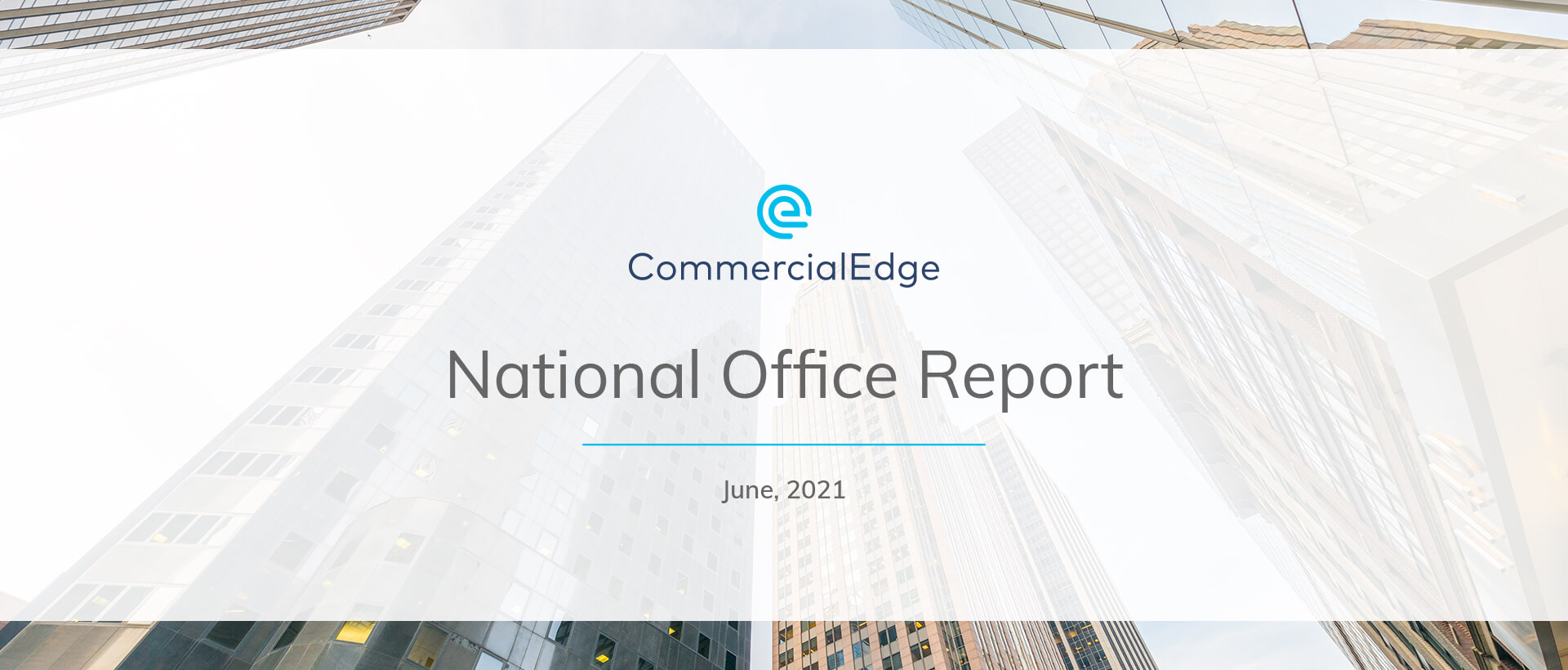Key Takeaways
- U.S. average office lease rates up 0.4% year-over-year
- Office vacancy averages 15.6% across top 50 U.S. office markets
- Investors still channeling office sales activity mostly toward high-quality assets
- Office construction continues; only 29% of projects located in suburban submarkets
U.S. Office Space Listing Rate Up 0.4% Y-o-Y, Growth Expected to Pick Up Pace
Across the top 50 U.S. markets, asking office rents averaged $38.36 per square foot in May. This was an uptick compared to previous months, as well as a continuation of the upward trend seen throughout the past year. Specifically, average full-service equivalent listing rates in May were 0.4% higher year-over-year (Y-o-Y). And, despite minutely incremental growth, rents have steadily increased amidst pandemic-related challenges that affected commercial real estate nationwide. Furthermore, as our most recent report indicates, the pace of growth — driven by the overall high quality of stock that is currently on the market — is likely to pick up.
Looking at individual markets, Los Angeles office space saw the largest increase in average full-service equivalent listing rates. Here, it rested at $41.04 per square foot last month — a 7% markup compared to May 2020. Next, three markets shared the second-best spot in terms of year-over-year rent growth. Specifically, average asking rents were up 5% compared to May of last year for office space in the Bay Area ($55.40 per square foot in May), Boston ($35.13 per square foot) and New Jersey ($33.32 per square foot). Not far behind, the third-highest increase in rents last month was recorded in Philadelphia, where lease rates rested at $29.88 per square foot, up 4.9% Y-o-Y.
Download the full report below for updated lease rate trends across all major U.S. markets.
Average Vacancy Rate at 15.6% Across Major U.S. Office Markets
Office vacancy saw a year-over-year increase of 240 basis points and averaged 15.6% across the markets surveyed for this most recent report. At the same time, our analysis of the national office sector in May found that the generous amount of high-value office space entering, as well as reentering, the market has contributed to the sustained growth of lease rates throughout the past 12 months. What’s more, current trends are expected to continue as more new office space comes to market and the lease landscape continues to shift to accommodate changing work structures and workforce strategies.
Investor Capital Remains Laser-Focused in High-Quality Asset Acquisition Strategies
Meanwhile, sales data analyzed for this report showed that capital continued to move despite generally cautious approaches from both buyers and sellers. In fact, investor interest in office properties across the top 50 U.S. markets has not waned, but rather remains rather more focused on specific high-quality assets. This is in contrast to pre-pandemic acquisition strategies that had more of a wider net of interest in markets as a whole. As such, transactions closed during the first five months of the year totaled $22.5 billion, which puts 2021 investment activity roughly on track with the total office sales volume recorded last year.
Notably, medical office space — as well as lab and life science sector-compatible office properties — have been significant drivers of investment. Moreover, office assets located in central business districts and other urban core submarkets continued to attract the most interest and have maintained their average sale prices at record-high levels during the first months of this year. Consequently, the sale price for urban office property averaged $429 per square foot — a 4.5% increase compared to the previous year.
New Construction Continues at Rapid Pace, Urban Submarkets Hold Majority of New Stock in Pipeline
On track with pre-pandemic capital trends, as well as current investment tendencies, most of the new office property under construction is located in urban cores, with only 29% of stock being developed in suburban submarkets. And, since the beginning of the year, developers have completed more than 20 million of the 80 million total square feet of new office space that is forecasted by year-end across the markets we surveyed. Nearly 161 million square feet remains under construction.
In terms of the largest pipelines among the markets we tracked for this report, Manhattan and Boston stood out by far with 19.3 and 13.3 million square feet, respectively, currently under construction. In third and fourth place were the western U.S. markets of Los Angeles (8.8 million square feet under construction) and San Francisco (8 million square feet).
Remarkably, Austin came in fifth with a pipeline currently at 7.6 million square feet under construction, which accounts for 10% of stock. Including new office supply in the planning stages, Austin is looking at 28% of its stock currently under development — the largest pipeline in the country on a percent-of-stock basis.
Download the full June 2021 report on performance across U.S. office markets, as well as insights on industry and fundamentals of economy recovery.

Methodology
The monthly CommercialEdge national office report covers properties that are 50,000 square feet or larger. Listing rate information refers to full-service rates or “full-service equivalent” for spaces available as of the report period. Vacancy reporting includes sublease data and excludes owner-occupied property. Sales and price-per-square-foot calculations do not always include portfolio transactions or property exchanges with unpublished dollar values. For a detailed methodology, download the full report above.
Stay current with the latest market reports and CRE news
Latest Posts
Recent Reports
Tariff Uncertainty Brings Short-Term Disruptions to Industrial Sector
Tariff uncertainty will lead to delayed leasing decisions from industrial occupiers, while also increasing construction costs
Coworking Continues to Gain Traction Amid Shifting Market Dynamics
Coworking spaces across the nation continue to grow in numbers and popularity, bringing more options to the office sector amid ongoing shifts.
Manufacturing Growth Set to Fuel Industrial Space Demand
The manufacturing sector is expected to remain a key driver of industrial development, though not without challenges.







